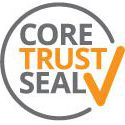- Submit data
- Submission guidelines
- Current meter data
Current meter data guide
BODC aims to ensure that all data incorporated into our database are adequately documented to allow long term viability and future access. Therefore, key data set information (metadata) are important for each data set we receive.
Information specific to current meter data are described below. Metadata should be supplied in our metadata submission template, however we are able to accept metadata in any format. Please do not be discouraged from sending us data even if some of the information is unavailable. We fully understand that there are many reasons why the standards specified may not be completely achieved.
Instructions for general data submissions and other data types are also available.
Data standard
Raw and quality controlled current meter data should, whenever possible, be stored at the original sampling frequency. All parameters measured as part of the series (i.e. temperature, pressure, conductivity) should be included with the data.
Current velocity may be expressed in terms of speed and direction and/or east and north components. Indicate whether the data have been corrected for magnetic variation and provide the assumed magnetic variation.
Metadata specific to current meter data
Deployment details
- The mooring type and mooring reference number.
- The ship/cruise which deployed the mooring.
- A project (if appropriate).
- Date/time of deployment/recovery for each instrument.
- Date/time of the start/end of usable data for each instrument.
- Position and method of position fix (i.e. DGPS, GPS).
- Water column depth (specify method - i.e. sounding and methodology, chart).
- Instrument depth (or height).
Instrument details
- Instrument description, reference number, manufacturer, model, principle of measurement, method of recording — provide a literature reference, web site reference or briefly describe. Include — accuracy, resolution and response range of individual sensors.
- Instrument modifications and their effect on the data.
- Standard of calibration — method, quality, dates and calibration coefficients.
Mooring details
- Brief description or diagram of the mooring structure.
- Performance of the mooring. Include — condition on recovery, whether dragged or damaged. Any event that might affect the data (i.e. effects of near surface buoyancy, fouling, mooring knockdown).
Data sampling/processing
- Sampling scheme of raw data e.g. continuous recording, instantaneous, averaged.
- Interval between samples and the duration of individual samples (raw data).
- Number of raw samples.
- Nominal interval of processed data (excluding gaps resulting from editing).
- Methods of averaging, filtering or compression.
- Gaps in the data record.
- Timing and corrections applied
- De-spiking/smoothing/interpolating methods and editing procedures.
- Data quality report.


